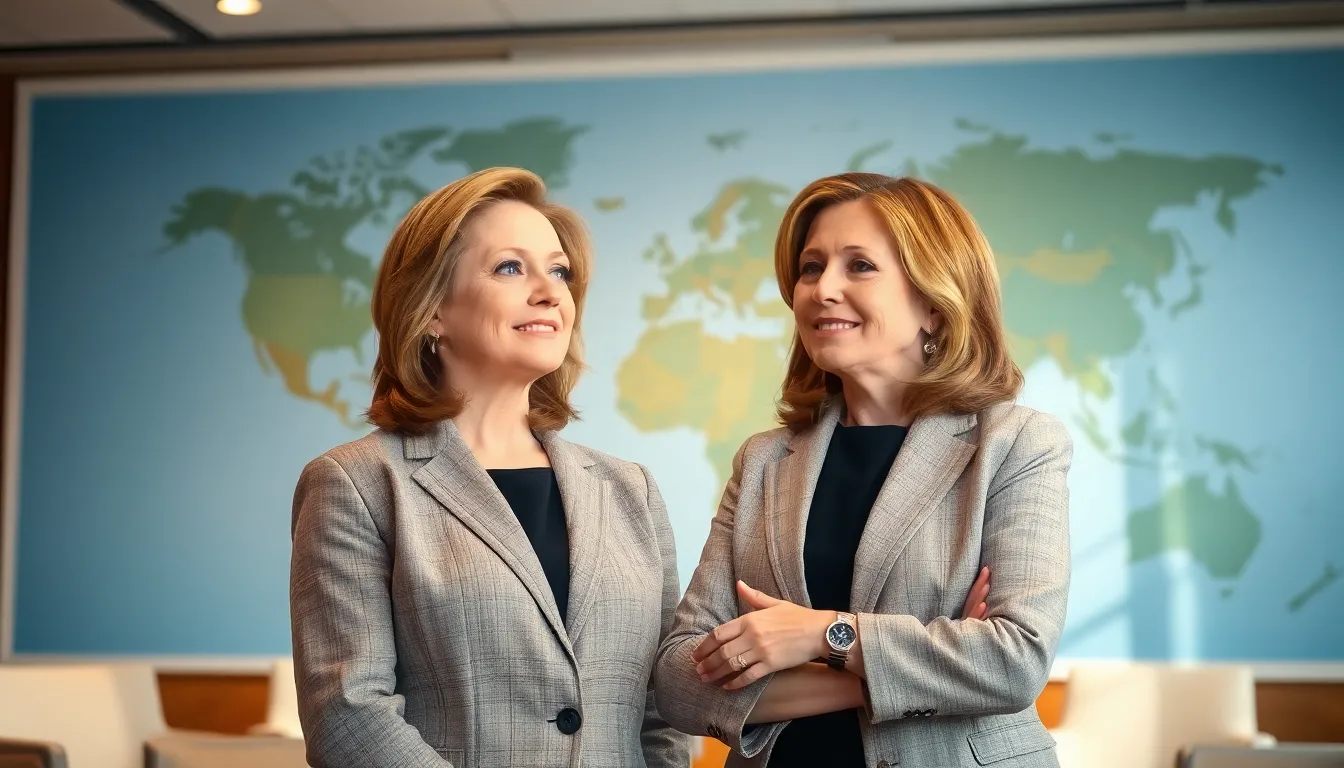In the world of politics and philanthropy, few names spark as much curiosity as Chelsea Clinton. With her family’s legacy and her own ventures, it’s no surprise that questions about her financial ties to organizations like USAID pop up. Did she really receive funds from this government agency, or is it just another conspiracy theory circulating in the digital ether?
Table of Contents
ToggleBackground on Chelsea Clinton
Chelsea Clinton, born on February 27, 1980, in Little Rock, Arkansas, is the daughter of former U.S. President Bill Clinton and former Secretary of State Hillary Clinton. She graduated from Stanford University in 2001, later earning her master’s degree from Oxford University and a Doctor of Philosophy degree from New York University.
Clinton has worked in various sectors, including public health and philanthropy. She served as a special correspondent for NBC News, where she reported on issues related to health and education. In 2010, she joined the Clinton Foundation, focusing on global health initiatives, women’s rights, and other philanthropic efforts.
In 2017, Chelsea launched her own organization, the Clinton Global Initiative University. This initiative aims to inspire college students to address global challenges through innovative solutions. The work emphasizes education, sustainability, and social impact.
Questions regarding Chelsea Clinton’s financial ties often arise, particularly concerning funding from organizations like USAID. These discussions typically center on her role with the Clinton Foundation and various projects aimed at improving global health and education. Critics may speculate about conflicts of interest, but supporters highlight her commitment to social causes.
While exploring the legitimacy of claims surrounding her funding, one must consider the interconnectedness of charitable work and governmental support. Financial contributions to initiatives can come from multiple sources, including international aid organizations. Understanding Chelsea Clinton’s background and her work provides contextual clarity regarding any alleged financial connections.
Overview of USAID

USAID plays a crucial role in U.S. foreign assistance. The agency aims to drive progress in global development and humanitarian efforts.
Mission and Goals
USAID’s mission focuses on ending extreme poverty and promoting resilient, democratic societies. The agency emphasizes supporting economic growth and improving health and education. Goals include empowering women and girls, fostering effective governance, and addressing climate change. These objectives guide USAID’s partnerships and initiatives worldwide, reflecting a commitment to sustainable change. Each project aligns with the broader mission to enhance global stability and security.
Funding and Allocation
USAID administers a budget of approximately $30 billion annually. Funding supports various programs worldwide, with allocations designated for specific countries and crisis situations. Development assistance typically targets health, education, and economic growth. Emergency aid responds to humanitarian crises, ensuring immediate support reaches affected populations. The funding distribution relies on performance metrics and country needs, emphasizing effectiveness and accountability in achieving objectives.
Examination of Financial Transactions
This section delves into the financial connections between Chelsea Clinton and USAID, examining claims and sources of funding.
Reports and Claims
Speculations about Chelsea Clinton’s financial ties to USAID have circulated widely. Numerous reports suggest she might have received funding, often linking her philanthropic work to USAID’s projects. Critics frequently cite her association with the Clinton Foundation as a basis for their claims. However, these assertions lack substantial evidence. Claims often stem from a mix of conjecture and conspiracy theories rather than verified facts. Independent investigations do not confirm any direct financial relationship between Chelsea and the agency. Sources typically focus on broader allegations without concrete details or documentation.
Analysis of Funding Sources
Understanding the nature of USAID funding clarifies the context surrounding these claims. USAID allocates approximately $30 billion annually across various programs, with specific goals aimed at improving global conditions. Most funding directs toward health, education, and economic growth initiatives. Chelsea Clinton’s involvement in philanthropic efforts aligns with many of USAID’s objectives. Nevertheless, the absence of direct financial transactions complicates the narrative. Organizations often receiving USAID funding may work independently from Clinton’s initiatives. Overall, a thorough review of available data reveals a lack of evidence confirming direct financial support to Chelsea from USAID.
Implications of Financial Support
Chelsea Clinton’s connections to USAID carry significant implications within both political and public spheres. Speculation often centers around her role in philanthropy and how it intersects with broader political narratives.
Political Context
Political dynamics shape perceptions of Chelsea’s financial ties to USAID. Critics argue that her involvement in initiatives aligns with power structures, thus creating potential conflicts of interest. Supporters highlight her commitment to humanitarian efforts and suggest her background enhances her qualifications in global health. Discussions around transparency increase as claims of funding arise. Skepticism often emerges in political debates, reflecting heightened scrutiny on the relationships between public figures and governmental agencies. Investigating these political landscapes reveals deeper implications of financial support on policymaking and advocacy efforts.
Public Perception
Public opinion plays a crucial role in assessing Chelsea’s funding connections. Misinformation frequently circulates, leading to misunderstandings about her relationship with USAID. Supporters describe her as an effective advocate for women’s rights and health initiatives, while detractors question her motives and transparency. This dichotomy illustrates the polarized views surrounding her philanthropic efforts. Coverage by reputable media outlets can sway public perception, influencing narratives about her involvement. Scrutiny of financial claims often leads to confusion, complicating how the public views her role in global initiatives. Addressing these perceptions requires clear communication and factual clarification regarding her work and potential funding sources.
Chelsea Clinton’s potential financial ties to USAID remain a topic of speculation and debate. While her philanthropic efforts align with the agency’s mission, claims of direct funding lack substantial evidence. The narrative surrounding her connections often reflects broader political dynamics and public perceptions, which can be influenced by misinformation.
Addressing these misunderstandings is crucial for a clearer understanding of her work in global health and women’s rights. By focusing on verified information and the impact of her initiatives, the conversation can shift from conjecture to acknowledgment of her genuine contributions to society.




